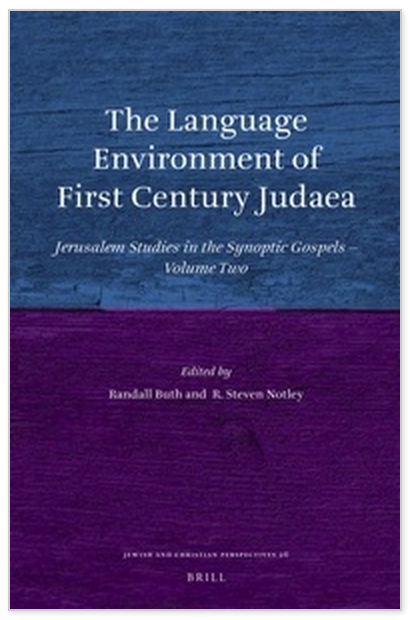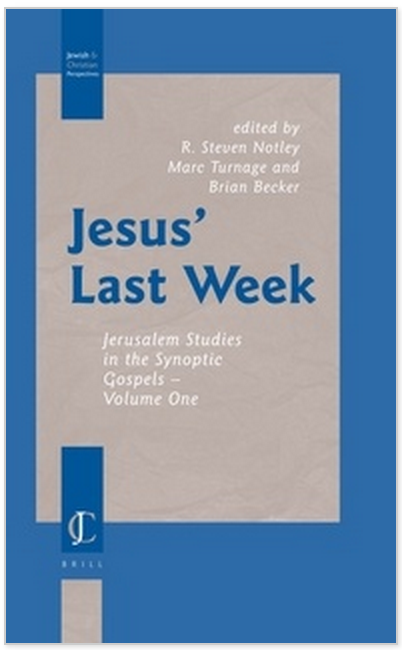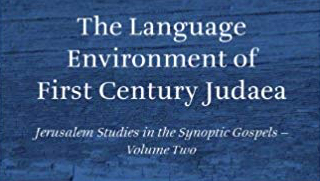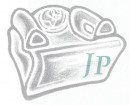A new collection of articles by scholars of the Jerusalem School of Synoptic Research has recently been released. The volume, entitled The Language Environment of First Century Judaea, is the second volume to appear in the Jerusalem Studies in the Synoptic Gospels series. This new volume examines the data which prove that the people living in the Land of Israel in the first century belonged to a trilingual society (Hebrew, Aramaic, and Greek). For too long scholars have worked under the assumption that Hebrew was no longer a living language in the Second Temple Period. This unfounded assumption led to an Aramaic-only approach to studying the sources behind the Gospels, which in turn has often led to a distorted picture of Jesus’ teachings. The new Jerusalem School volume demonstrates how a trilingual approach to studying first-century Jewish culture in the Land of Israel can give us a clearer understanding of Jesus and the Gospels.

The articles contained in the new volume include:
- Guido Baltes, “The Origins of the ‘Exclusive Aramaic Model’ in the Nineteenth Century: Methodological Fallacies and Subtle Motives”
- Guido Baltes, “The Use of Hebrew and Aramaic in Epigraphic Sources of the New Testament Era”
- Randall Buth and Chad Pierce, “Hebraisti in Ancient Texts: Does Ἑβραϊστί Ever Mean ‘Aramaic’?”
- Marc Turnage, “The Linguistic Ethos of the Galilee in the First Century C.E.”
- Serge Ruzer, “Hebrew versus Aramaic as Jesus’ Language: Notes on Early Opinions by Syriac Authors”
- Daniel A. Machiela, “Hebrew, Aramaic, and the Differing Phenomena of Targum and Translation in the Second Temple Period and Post-Second Temple Period”
- Randall Buth, “Distinguishing Hebrew from Aramaic in Semitized Greek Texts, with an Application for the Gospels and Pseudepigrapha”
- R. Steven Notley, “Non-Septuagintal Hebraisms in the Third Gospel: An Inconvenient Truth”
- R. Steven Notley and Jeffrey P. Garcia, “Hebrew-Only Exegesis: A Philological Approach to Jesus’ Use of the Hebrew Bible”
- David N. Bivin, “Jesus’ Petros–petra Wordplay (Matthew 16:18): Is It Greek, Aramaic, or Hebrew?”
- Randall Buth, “The Riddle of Jesus’ Cry from the Cross: The Meaning of ηλι ηλι λαμα σαβαχθανι (Matthew 27:46) and the Literary Function of ελωι ελωι λειμα σαβαχθανι (Mark 15:34)”
To read a review of The Language Environment of First Century Judaea, click here.

The previous volume in the Jerusalem Studies in the Synoptic Gospels series, Jesus’ Last Week, examined aspects of the synoptic accounts of Jesus’ final days in Jerusalem.
Articles in Jesus’ Last Week include:
- David Flusser, “The Synagogue and the Church in the Synoptic Gospels”
- Shmuel Safrai, “Early Testimonies in the New Testament Laws and Practices Relating to Pilgrimage and Passover”
- Randall Buth and Brian Kvasnica, “Temple Authorities and Tithe-Evasion: The Linguistic Background and Impact of the Parable of the Vineyard, the Tenants and the Son”
- Serge Ruzer, “The Double Love Precept in the New Testament and the Rule of the Community”
- R. Steven Notley, “Learn the Lesson of the Fig Tree”
- R. Steven Notley, “The Eschatological Thinking of the Dead Sea Sect and the Order of Blessing in the Christian Eucharist”
- Marc Turnage, “Jesus and Caiaphas: An Intertextual-Literary Evaluation”
- Chana Safrai, “The Kingdom of Heaven and Study of Torah”
- Brad H. Young, “A Fresh Examination of the Cross, Jesus and the Jewish People”
- David Bivin, “Evidence of an Editor’s Hand in Two Instances of Mark’s Account of Jesus’ Last Week?”
- Shmuel Safrai, “Spoken and Literary Languages in the Time of Jesus”
- Hanan Eshel, “Use of the Hebrew Language in Economic Documents from the Judaean Desert”
































































































Comments 2
Thank you for this important work!
By the way, the website hosting the review seems to be offline. The link now redirects to a page that seems suspicious.
Author
Thanks for the heads up about the broken link. It has now been restored to a previous version that was preserved thanks to the Wayback Machine on the Internet Archive (www.archive.org).